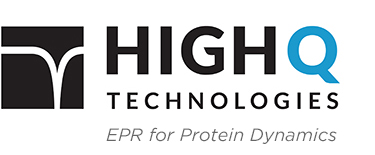
Spin Class: DEER in the Spotlight
July 19, 2023
Discovery on Target 2023: Take a Complement
November 24, 2023
Spin Class: DEER in the Spotlight
July 19, 2023
Discovery on Target 2023: Take a Complement
November 24, 2023
Insights from Austin
The latest insights on EPR technology trends, customer successes and industry best practices
Rocky Mountain Conference on Magnetic Resonance 2023: Beyond the Summit
Advancements in science are often spurred by the ‘new.’ Be it new technology, new techniques, or new ideas, novel abilities will beget novel outcomes. The field of EPR has seen this effect throughout its history – beginning with the discovery of the phenomenon itself, and driven forward by breakthroughs such as the development of site-directed spin labeling and distance measurement techniques that enable structural studies on biomolecules; membrane mimetics and in-cell/in-vivo methods to capture physiologically relevant data; in-silico modeling, simulation, and analyses packages; and improvements in hardware, resonators, and pulse-shaping. It is a never-ending upward spiral of new discoveries prompting more questions, requiring new tools to investigate. During my recent visit to the Rocky Mountain Conference on Magnetic Resonance in Denver, several talks emphasized just how far this field has come, how it has benefitted from such advancements, and what new tools could push it even further.
Prof. David Cafiso (University of Virginia) presented on his group’s work examining the mechanism of a cellular transport protein, BtuB. Using DEER distance measurements to examine this protein and monitor conformational changes under several conditions, notably in native cells and lipid membranes, the study revealed conformational discrepancies between these environments. Effectively, the cellular milieu is needed for the physiological activity of BtuB, which is not accurately reproduced in membrane mimics. To me, this study presents several key ideas. From a methodological standpoint, in-cell and in-vivo EPR require more development to truly access biologically accurate data. This requires process development in reduction-resistant spin labeling and cellular uptake but would also be greatly aided through highly sensitive and stable measurements. Quality, high confidence data is a must when working with difficult samples. The presented work was impressive and insightful, and it is exciting to imagine the possibilities in future studies.

Prof. Glenn Millhauser (University of California, Santa Cruz) used DEER to examine the conformational distributions of another membrane transporter, cystinosin. Mutations of this transporter disrupt the passage of vital materials across the cell membrane, leading to the genetic disease cystinosis. Using EPR distance measurements, the conformations of this transport protein were observed and compared, revealing the impacts of such mutations on the functional conformations of the protein – and therefore providing insight into the mechanism of disease and introducing potential therapeutic avenues. The work encompassed a multitude of measurements, emphasizing that speed and throughput are vital considerations when tackling tough problems in complicated macromolecules. A wealth of data can enable holistic analyses and aid in the deconvolution of multifaceted systems. Continual improvements of the speed and sensitivity of EPR experimentation will help broaden its reach to similarly relevant problems and diseases.
It was also a scientific and personal pleasure to see the collective works of Prof. Sunil Saxena’s lab (University of Pittsburgh, my alma mater). While I do have a bias, their work was undoubtably noteworthy with four talks involving sensitivity gains in EPR distance measurements, optimizing experimental setup to account for orientational effects, and combining EPR data with advanced molecular dynamics simulations for conformational interpretation. These presentations ran the full gamut of the scientific process, improving upon experimental design, data acquisition, and structural analysis. It’s amazing the progress that can come in a few short years, and there is no doubt that we can go even further in the pursuit of experimental efficiency.

Austin Gamble Jarvi
Applications Scientist
These conferences – Rocky Mountain as well as the others I’ve attended – are excellent opportunities to not just experience where the field is and has been, but to get a glimpse of where it is going. Seeing a field’s cutting edge is always fascinating but can be further enriched when you can also see the initial incision and the trajectory of the blade as it continues to slice. Rocky Mountain demonstrated where the field has been and where it is today. It is now up to us to find where it can go, and then make it happen. In the conference’s closing remarks, next year’s Chair, Prof. Songi Han (University of California, Santa Barbara) expressed her hopes for the next conference, encouraging the community to reach outward to expand the field, and to continue to bring in the new and exciting. I can’t speak for everyone, but from all of us here at High Q, new and exciting is on the way. ‘Til next time!
